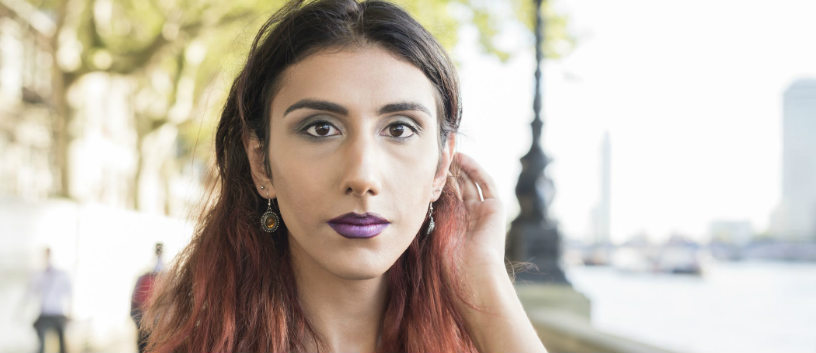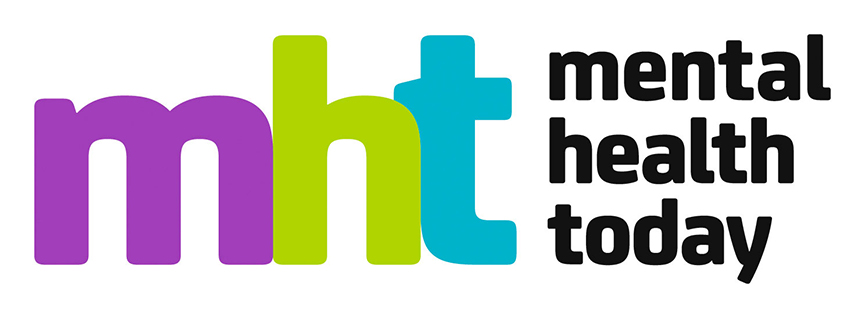Identity gatekeeping is deadly: why we need to stop platforming transphobia
Kieran Yates meet a manicurist activist battling burnout from hostility, as reform of the Gender Recognition Act approaches a major milestone this month.

“I’ve changed my passport. It’s…not a nice experience to go through. If I say I’m a woman, I’m a woman. I don’t want to go through a panel of white, straight, CIS men in order to be validated."
Activist Charlie Craggs is sighing as she recalls the process of obtaining her passport that now, reflects the gender that she has been sure of all her life. At present, the idea of self-identifying gender recognition is back in the news, and we’re discussing it today, thanks to the open consultation of the reform of the Gender Recognition Act 2004. The GRA, which enables British citizens to change their gender is currently open (until Oct 19) to public consultation to work out how it can better serve those that use it.
The act accepts that trans people have the legal right to change their gender, but also recognises that there is a gap between the number of people who might want to use the legal process and the number people who have actually applied. (Since the GRA came into force, only 4,910 people have legally changed their gender in the UK which according to data, is lower than those who identify as trans and non-binary in the UK). Perhaps the reasons for this is thanks to an administrative process that they admit may be seen as “too bureaucratic, expensive and intrusive”. Craggs and others go further and say that there are other issues with the bill, too. Namely, that it doesn’t take into account structural issues about resource, or needs of the most vulnerable.
Nail bar nuance
Craggs’ activism is about trying to normalise visibility. Her project, ‘Nail Transphobia’ sees her travelling around the UK with a pop up nail salon offering the public free manicures ("the stiletto is the most popular nail shape!") - and an open space to ask questions. For her, there’s little excuse for not ‘getting it’ when she is – quite literally – delivering answers.
“When I started in 2013, a lot of people didn’t know the difference between say, a trans person and drag queen” she says. “So, people would ask about that. But now, the questions are way more to do with my humanity. We’ve come a fair way over the last few years.”
Arguably, cultural visibility has shifted in the last five years to a space where many obstacles are slowly coming down for trans men and women. But cultural visibility is just one step. The hope, with projects like ‘Nail Transphobia’ is that these ideas of what it means to discuss gender in 2018 might rise to the top. If you can educate someone in a 15-minute manicure session, is educating policy makers really that difficult?
Either way, there is a way to go to implement new systems that work for the needs of a changing population. At present, the process for gender identification is teeming with challenges. A psychiatric report is required to access a gender clinic, which involves applying to psychiatrists or medical gatekeepers, (you need a psychiatric diagnosis of gender dysphoria to apply) non-binary people are not well represented, doctors are able to ask invasive questions about your personal history of surgery, and waiting times for gender identity clinics can be up to five years.
These are real obstacles to tackle on policy fronts. For activist Shon Faye, the current problems with the GRA is crucially, that it doesn’t take into account spectrums of privilege. “It’s predicated on a somewhat outdated idea of the medicalised transsexual” she says. “And it requires a certain level of social enfranchisement which not all trans people have. There are certain requirements about proving you’ve been living in your gender - whether or not you’re in work, whether or not you been able to afford to change your passport, driving licence, bank accounts. On top of that there’s a fee – and waiting times excludes a lot of trans people”. And that’s before you need to provide proof that you’ve been living in your 'acquired' gender to the satisfaction of a panel of strangers.
TERF war
While these discussions are taking place with Faye and allies, much of the resistance to gender identification has come from assumed allies: fellow women. For these feminists, known as ‘TERFs’ (trans exclusionary radical feminists), the issue of biological notions of gender has caused contention. From high profile feminists like Germaine Greer denying trans women as women, to people tweeting abuse to trans women online, the debate in recent months has expanded beyond the remits of the gender identification process and has become a media debate on the legitimacy of trans identities full stop. “Quite quickly the debate gets into whether trans people are who we say we are…Whether trans women are actually women” says Faye.
Craggs takes a deep breath when we broach the issue. “I will say that it is so dangerous what is happening right now, I think it’s the most insidious type of transphobia. In regards to how that affects mental health, I’m a tough girl and I’ve been through a lot but the other day I was giving a talk at a WI meeting and I started crying talking about TERFs. I just thought, why the fuck am I having to explain my humanity?"
Mental health responses
Faye tells a story of recently waking up to seeing an argument on ‘Good Morning Britain' with Piers Morgan “and an anti-trans campaigner about the risk to girl guides from trans girls who may be rapists. So, I wake up and see myself, and women like me compared to rapists. That invasion of your own identity becomes exhausting."
It isn’t difficult to consider that media misrepresentations that platform transphobia might have negative impacts on mental health. The Trans Mental Health Study (2012) found that 11% of trans people had thought about ending their lives at some point in the last year and 33% had attempted to take their life more than once in their lifetime. While Stonewall’s 2017 research shows that anti-LGBT hate crime is on the rise. In short, the law appears to start from a position that it is remedying a disorder and that the law should protect society from trans people – not the other way around. So how much does policy and misinformed media enforce a hostile climate for people’s mental health?
- See also: Gender, identity, support
- See also: 'The cycle': here's what transgender rejection feels like
- See also: What we can learn from trans activism
British Asian trans woman Anjeli Patel describes her own experience of finding solutions that can be of help. “I’m someone who has struggled with my own mental health for a long time” she says. “There is more to be done, however trans healthcare that specifically targets trans people like cliniQ, [a free health and well-being centre for trans people] can be positive. They have yoga sessions, group therapy, one to one counselling”.
“In terms of broader mental health, I think there needs to be a lot more nuance. Getting people from South Asian communities to understand that mental health and trans identities exist, from GPs to primary care givers, as well as family and friends for instance, is a first step."
What’s striking about the conversations around reform is that these are not, as they have been derailed into – purely ideological. Scotland has already run a consultation, (although the results are yet to be seen) and Wales is in the process of ending the requirement for a doctor to sign off a person’s mental health before they can transition. Earlier this year, gender dysphoria was removed from the WHO’s list of mental health disorders for the first time.
The solutions are provided by those with first hand experiences of the process. Moving forward, we must advocate for more service and provisions to reduce clinic waiting times, to take into account challenges beyond expense, to include non-binary people into the narrative, and perhaps most crucially, challenge the notion of gatekeepers. In simplest terms, this should be understood; the more trans and non-binary people are visible, the more normalised the idea of changing gender will become, and the more obvious it is that a streamlined process is necessary.
It remains to be seen what will happen after October 19 but for women like Craggs, the answer to the question of how to best serve the trans and non-binary community is simple, but requires repetition, “trans women are talking about trans issues and solutions all the time…people need to take some time to listen."
Show your support for what you’ve read today. Enable us to keep finding and sharing the ideas that will better shape tomorrow’s mental health care.
Donation Information

Comments
Write a Comment
Comment Submitted